In the competitive compact SUV market, two models stand out: the Peugeot 2008 and the VW T-Roc. Both vehicles offer distinct advantages and innovations that cater to diverse consumer preferences. This article delves into a comprehensive comparison of these two popular models based on technical specifications, performance, and innovative features.
Peugeot 2008 vs VW T-Roc – Differences & prices compared
Two cars, one duel: Peugeot 2008 meets VW T-Roc.
Which one wins in performance, efficiency and value for money? Find out now!
Design and Dimensions
The Peugeot 2008 boasts a sleek and modern design, measuring 4304 mm in length, 1770 mm in width, and 1523 mm in height. Its sporty aesthetics are complemented by a distinctive front grille and sharp LED headlights, giving it a bold road presence.
In contrast, the VW T-Roc presents a more robust appearance. Depending on the specific variant, it measures between 4236 mm and 4271 mm in length, 1811 mm in width, and a height that ranges from 1527 mm to 1584 mm. This size gives the T-Roc a slightly larger footprint, providing additional cabin space.
Engine Options and Performance
Under the hood, the Peugeot 2008 offers a range of engine types including a Petrol MHEV (Mild Hybrid), traditional Petrol options, and an electric variant. It delivers power outputs ranging from 101 HP to 156 HP, demonstrating versatility across different driver preferences. The 2008 is notable for its acceleration, achieving 0-100 km/h in as little as 8.3 seconds, with a top speed of 206 km/h.
The VW T-Roc, on the other hand, features a broader range of options, encompassing both petrol and diesel engines. Power outputs vary from 115 HP to a staggering 300 HP, especially in the performance-oriented R variant. The acceleration times vary widely as well, with the quickest model achieving 0-100 km/h in just 4.9 seconds, showcasing the T-Roc’s performance prowess. The maximum speed across its variants can reach up to 250 km/h, making it a notable option for speed enthusiasts.
Fuel Efficiency and CO2 Emissions
Fuel efficiency is a critical consideration for buyers today. The Peugeot 2008 is impressively efficient, with consumption rates as low as 5 L/100 km, depending on the engine variant. The electric version also boasts an electric range of up to 406 km, making it viable for eco-conscious drivers.
The VW T-Roc shows decent efficiency, with fuel consumption ranging from 4.7 L/100 km to 8.5 L/100 km. The diesel options are particularly economical, ideal for those who prioritize mileage. However, its CO2 emissions vary, with some variants rated as high as 166 g/km, showing that the T-Roc may not be as green as the 2008.
Interior Comfort and Technology
When it comes to interior comfort, the Peugeot 2008 offers a spacious cabin with ample room for five passengers. It features advanced technologies such as a digital cockpit and an intuitive infotainment system that integrates seamlessly with smartphones. Additionally, the trunk capacity of 434 liters provides excellent space for luggage or groceries.
The VW T-Roc, with its stylish design and ergonomic layout, can also comfortably seat five people. Its trunk capacity is slightly higher, ranging from 284 liters to 445 liters depending on the configuration. Notable technological advancements include a customizable digital cockpit and various connectivity options, enhancing driver and passenger experience alike.
Safety Features and Innovations
Both the Peugeot 2008 and VW T-Roc are equipped with cutting-edge safety features. The 2008 includes advanced systems like autonomous emergency braking and lane-keeping assist, earning high safety ratings in crash tests.
The T-Roc comes loaded with features such as adaptive cruise control, blind-spot monitoring, and park assist technologies, making it equally competitive in safety parameters. Both models offer peace of mind to drivers and passengers alike.
Conclusion
In the battle between the Peugeot 2008 and VW T-Roc, each model presents its unique strengths. The 2008 shines with its electrifying options, impressive fuel efficiency, and striking design. In contrast, the T-Roc captivates with its varied engine selections, performance capabilities, and robust safety features. Ultimately, the choice between these two SUVs will depend on individual preferences, but either way, both models exemplify the best of what the compact SUV market has to offer.
Here’s where it gets real: The technical differences in detail
Costs and Efficiency:
Looking at overall running costs, both models reveal some interesting differences in everyday economy.
Peugeot 2008 has a barely noticeable advantage in terms of price – it starts at 24500 £, while the VW T-Roc costs 26400 £. That’s a price difference of around 1976 £.
Fuel consumption also shows a difference: Peugeot 2008 manages with 4.90 L and is therefore somewhat more efficient than the VW T-Roc with 5.50 L. The difference is about 0.60 L per 100 km.
Engine and Performance:
Power, torque and acceleration say a lot about how a car feels on the road. This is where you see which model delivers more driving dynamics.
When it comes to engine power, the Peugeot 2008 has a barely noticeable edge – offering 156 HP compared to 150 HP. That’s roughly 6 HP more horsepower.
In acceleration from 0 to 100 km/h, the Peugeot 2008 is minimal quicker – completing the sprint in 8.30 s, while the VW T-Roc takes 8.90 s. That’s about 0.60 s faster.
In terms of top speed, the VW T-Roc performs hardly perceptible better – reaching 212 km/h, while the Peugeot 2008 tops out at 206 km/h. The difference is around 6 km/h.
There’s also a difference in torque: Peugeot 2008 pulls minimal stronger with 270 Nm compared to 250 Nm. That’s about 20 Nm difference.
Space and Everyday Use:
Beyond pure performance, interior space and usability matter most in daily life. This is where you see which car is more practical and versatile.
Both vehicles offer seating for 5 people.
In curb weight, Peugeot 2008 is to a small extent lighter – 1263 kg compared to 1465 kg. The difference is around 202 kg.
In terms of boot space, the VW T-Roc offers barely noticeable more room – 475 L compared to 434 L. That’s a difference of about 41 L.
In maximum load capacity, the Peugeot 2008 performs hardly perceptible better – up to 1467 L, which is about 117 L more than the VW T-Roc.
When it comes to payload, VW T-Roc somewhat takes the win – 515 kg compared to 447 kg. That’s a difference of about 68 kg.
Who comes out on top?
Overall, the VW T-Roc shows itself to be only a minor advantage and secures the title of DriveDuel Champion.
It convinces with the more balanced overall package and proves to be the more versatile choice for everyday use.
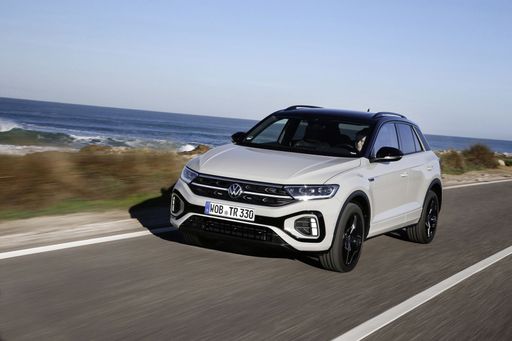 @ Volkswagen AG / VW Media
@ Volkswagen AG / VW Media
VW T-Roc
Peugeot 2008
The Peugeot 2008 is a stylish, city-friendly crossover that packs big character into a compact package, turning mundane errands into a mildly entertaining drive. Its clever interior layout, polished looks and confident ride make it a smart choice for buyers who want practical daily sense with a touch of flair.
details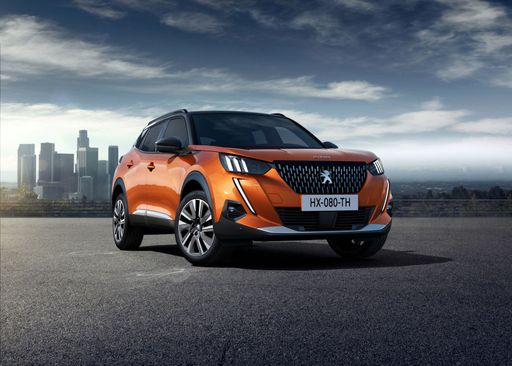 @ Peugeot / Stellantis Media
@ Peugeot / Stellantis Media
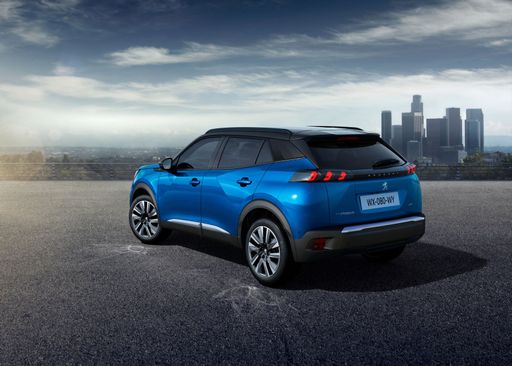 @ Peugeot / Stellantis Media
@ Peugeot / Stellantis Media
 @ Peugeot / Stellantis Media
@ Peugeot / Stellantis Media
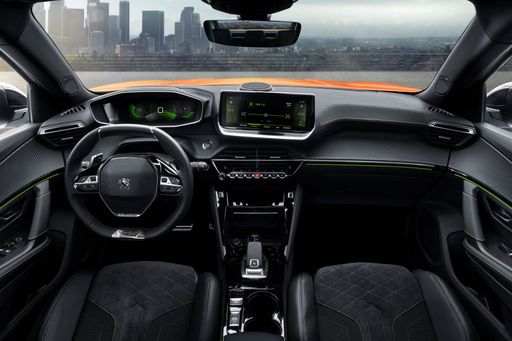 @ Peugeot / Stellantis Media
@ Peugeot / Stellantis Media
VW T-Roc
The VW T-Roc mixes cheeky, coupe-like styling with the everyday sense and space of an SUV, so it looks fun without sacrificing family sense. It’s a likeable all-rounder with tidy road manners and plenty of personality, ideal if you want a car that’s practical enough for chores but entertaining enough to enjoy.
details @ Volkswagen AG / VW Media
@ Volkswagen AG / VW Media
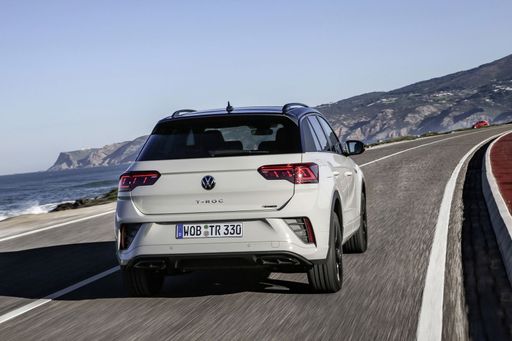 @ Volkswagen AG / VW Media
@ Volkswagen AG / VW Media
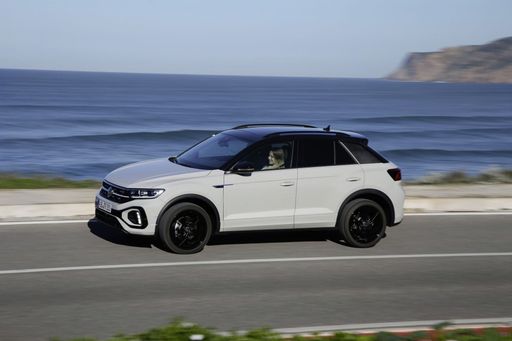 @ Volkswagen AG / VW Media
@ Volkswagen AG / VW Media
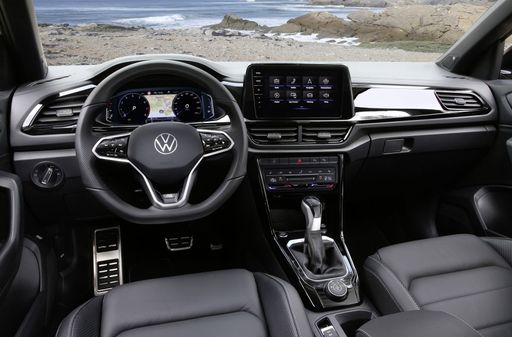 @ Volkswagen AG / VW Media
@ Volkswagen AG / VW Media
 @ Peugeot / Stellantis Media
@ Peugeot / Stellantis Media
|
 @ Volkswagen AG / VW Media
@ Volkswagen AG / VW Media
|
|
|
|
Costs and Consumption |
|
|---|---|
|
Price
24500 - 40300 £
|
Price
26400 - 38000 £
|
|
Consumption L/100km
4.9 - 5.7 L
|
Consumption L/100km
5.5 - 6.3 L
|
|
Consumption kWh/100km
15.50 kWh
|
Consumption kWh/100km
-
|
|
Electric Range
406 km
|
Electric Range
-
|
|
Battery Capacity
51 kWh
|
Battery Capacity
-
|
|
co2
0 - 129 g/km
|
co2
126 - 143 g/km
|
|
Fuel tank capacity
44 L
|
Fuel tank capacity
50 L
|
Dimensions and Body |
|
|---|---|
|
Body Type
SUV
|
Body Type
SUV
|
|
Seats
5
|
Seats
4 - 5
|
|
Doors
5
|
Doors
2 - 5
|
|
Curb weight
1263 - 1623 kg
|
Curb weight
1465 - 1539 kg
|
|
Trunk capacity
434 L
|
Trunk capacity
284 - 475 L
|
|
Length
4304 mm
|
Length
4271 - 4373 mm
|
|
Width
1770 mm
|
Width
1811 - 1828 mm
|
|
Height
1523 mm
|
Height
1527 - 1573 mm
|
|
Max trunk capacity
1467 L
|
Max trunk capacity
1350 L
|
|
Payload
407 - 447 kg
|
Payload
368 - 515 kg
|
Engine and Performance |
|
|---|---|
|
Engine Type
Petrol, Electric, Petrol MHEV
|
Engine Type
Petrol, Petrol MHEV
|
|
Transmission
Manuel, Automatic
|
Transmission
Manuel, Automatic
|
|
Transmission Detail
Manual Gearbox, Reduction Gearbox, Dual-Clutch Automatic
|
Transmission Detail
Manual Gearbox, Dual-Clutch Automatic
|
|
Drive Type
Front-Wheel Drive
|
Drive Type
Front-Wheel Drive
|
|
Power HP
101 - 156 HP
|
Power HP
115 - 150 HP
|
|
Acceleration 0-100km/h
8.3 - 10.9 s
|
Acceleration 0-100km/h
8.9 - 12.3 s
|
|
Max Speed
150 - 206 km/h
|
Max Speed
187 - 212 km/h
|
|
Torque
205 - 270 Nm
|
Torque
200 - 250 Nm
|
|
Number of Cylinders
3
|
Number of Cylinders
3 - 4
|
|
Power kW
74 - 115 kW
|
Power kW
85 - 110 kW
|
|
Engine capacity
1199 cm3
|
Engine capacity
999 - 1498 cm3
|
General |
|
|---|---|
|
Model Year
2023 - 2025
|
Model Year
2024 - 2025
|
|
CO2 Efficiency Class
D, A, C
|
CO2 Efficiency Class
E, D
|
|
Brand
Peugeot
|
Brand
VW
|
Is the Peugeot 2008 offered with different drivetrains?
The Peugeot 2008 is available as Front-Wheel Drive.
The prices and data displayed are estimates based on German list prices and may vary by country. This information is not legally binding.
